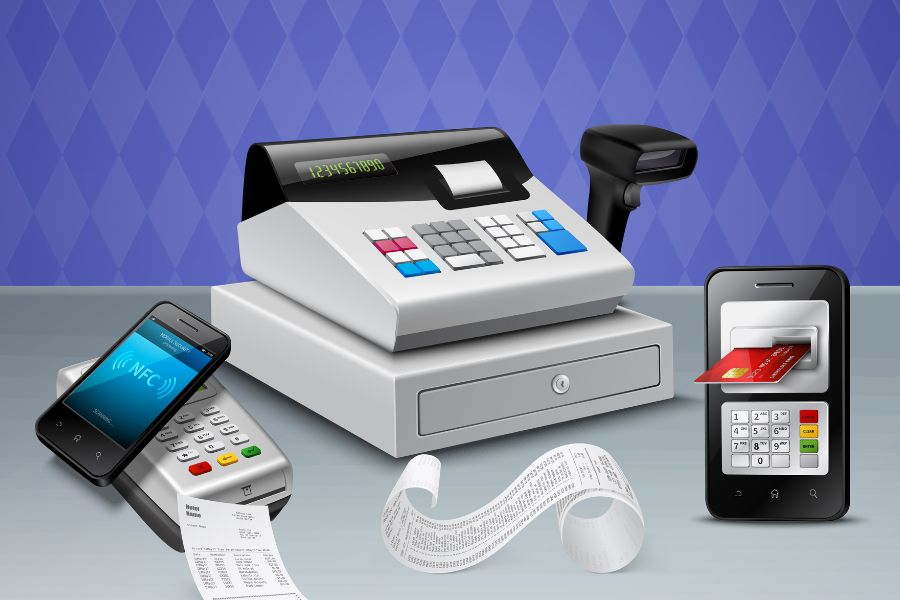Replatforming involves migrating an existing software application or system to a new technology platform. In this article, we will explore the concept of what is replatforming and highlight why retailers should consider it. From enhancing scalability to modernizing systems, discover the benefits that can help retailers stay competitive in a dynamic market.
What Is Replatforming?
Many individuals with concerns about the replatforming process often wonder, “What is replatforming?” Replatforming is a strategic process that involves migrating an existing software application or system from one technology platform to another. It encompasses a comprehensive overhaul of the underlying infrastructure, framework, or technology stack while aiming to maintain or enhance the application’s functionality, performance, and user experience.
The primary objective of replatforming is to address challenges or capitalize on new opportunities that the current platform may not adequately support. This can include addressing issues related to outdated technology, scalability limitations, performance bottlenecks, cost optimization, vendor lock-in, or the desire to leverage enhanced features and capabilities offered by a different platform.
One of the common reasons for replatforming is when the current technology stack or infrastructure becomes obsolete or reaches its end-of-life. In such cases, organizations opt to migrate to modern and more efficient solutions that provide better support, security, and compatibility with the latest industry standards.
Why Should Retailers Consider It?
Replatforming offers several compelling reasons for retailers to consider adopting it. Let’s delve into each of these reasons in detail:
Scalability on All Fronts: Meeting Your Customer and Business Needs
In today’s dynamic retail landscape, meeting customer expectations and staying competitive is crucial. Replatforming process allows retailers to scale their operations and infrastructure to handle increasing customer demands. Whether it’s accommodating high website traffic, handling large order volumes, or integrating with new sales channels, a robust and scalable platform can ensure a seamless customer experience while supporting business growth.
Updating Legacy Systems: Transitioning to a Fully SaaS Platform
Many retailers still rely on legacy systems that are outdated, inflexible, or require extensive maintenance. Replatforming presents an opportunity to transition from these legacy systems to a modern, cloud-based software-as-a-Service (SaaS) platform. By moving to a SaaS model, retailers can benefit from automatic updates, improved security, simplified management, and reduced IT overhead. SaaS platforms also offer greater flexibility and integrations with other tools and services, enabling retailers to adapt quickly to changing market needs.
Leaning into Optimization: Checkout and E-commerce Site Optimization
An efficient and optimized checkout process is crucial for retailers to reduce cart abandonment rates and improve conversion rates. Replatforming allows retailers to leverage modern e-commerce platforms with built-in optimization features, such as streamlined checkout flows, guest checkout options, mobile responsiveness, and personalized experiences. These optimizations enhance the overall shopping experience and help retailers maximize sales and customer satisfaction.
Additionally, replatforming provides an opportunity to optimize the entire e-commerce site, including product catalogs, navigation, search functionality, and site performance. By leveraging advanced features and tools available on the new platform, retailers can create a more user-friendly, intuitive, and visually appealing online store that drives engagement and sales.
Measuring Performance: Effective and Accessible Analytics
Accurate and actionable data is vital for retailers to make informed business decisions and optimize their strategies. Replatforming often involves migrating to platforms that offer advanced analytics capabilities. These platforms provide retailers with in-depth insights into customer behavior, sales performance, inventory management, marketing campaigns, and more.
By leveraging effective and accessible analytics, retailers can identify trends, understand customer preferences, measure the success of marketing initiatives, and optimize their operations. These insights enable data-driven decision-making and help retailers tailor their offerings to meet customer expectations, drive revenue growth, and improve overall business performance.
Things To Consider Before Replatforming
Before embarking on a replatforming project, retailers should carefully consider several important factors to ensure a smooth and successful transition. Let’s explore three crucial considerations:
The Intended Outcome of Replatforming
Clearly defining the intended outcome of the replatforming initiative is essential. Retailers should have a clear understanding of what they aim to achieve through replatforming. This could include objectives such as improving scalability, enhancing the customer experience, increasing operational efficiency, or enabling new business capabilities.
By clearly defining the desired outcome, retailers can align their replatforming efforts with their overarching business goals. This ensures that the chosen platform and migration strategy are in line with the expected benefits and deliver the desired results.
If a Specialized Solution Can Help
When evaluating replatforming options, retailers should consider whether a specialized solution can better address their specific needs. Retailers often have unique requirements, such as omnichannel capabilities, complex inventory management, or integration with industry-specific tools. In such cases, opting for a specialized e-commerce platform or industry-specific solution may provide a more tailored and efficient solution.
Specialized solutions offer pre-built features and functionalities that align with industry standards and best practices. They may also offer integration with specialized third-party tools or services that cater to specific retail needs. Retailers should assess whether a specialized solution aligns with their business requirements and provides the necessary features to support their operations.
Time and Resources Needed
Replatforming is a significant undertaking that requires adequate time, resources, and planning. It is important to assess the timeline and resource availability before initiating the re-platforming process. Considerations include:
- Project Duration: Replatforming can be a time-consuming process, depending on the complexity of the existing system and the extent of customization required. Retailers should allocate sufficient time for planning, implementation, testing, and user training.
- Internal Resources: Assess the availability and expertise of internal resources required for the replatforming project. This includes IT staff, developers, project managers, and other team members who will be involved in the migration. Adequate resource allocation and clear roles and responsibilities are crucial for a successful replatforming project.
- Budget: Replatforming typically involves costs associated with licensing, implementation, customization, data migration, and potential third-party services. Retailers should have a clear understanding of the budget required for the replatforming project and ensure it aligns with their financial capabilities.
It is advisable to conduct a thorough analysis of the time and resources needed for re-platforming, accounting for potential challenges or delays that may arise during the process. This helps in setting realistic expectations and ensures that the necessary resources are allocated for a successful re-platforming initiative.
By considering the intended outcome, evaluating the need for specialized solutions, and assessing time and resource requirements, retailers can approach replatforming with clarity and make informed decisions. This sets the foundation for a smooth and effective replatforming process that aligns with business objectives and sets the stage for future growth and success.
Conclusion
Replatforming is the process of migrating software applications or systems to new technology platforms. Retailers should consider replatforming to modernize their systems, improve scalability, and enhance the overall customer experience. By understanding what is replatforming and embracing replatforming, retailers can stay competitive, adapt to evolving market demands, and pave the way for future growth and success. If you want to know more about re-platforming, feel free to contact us.



